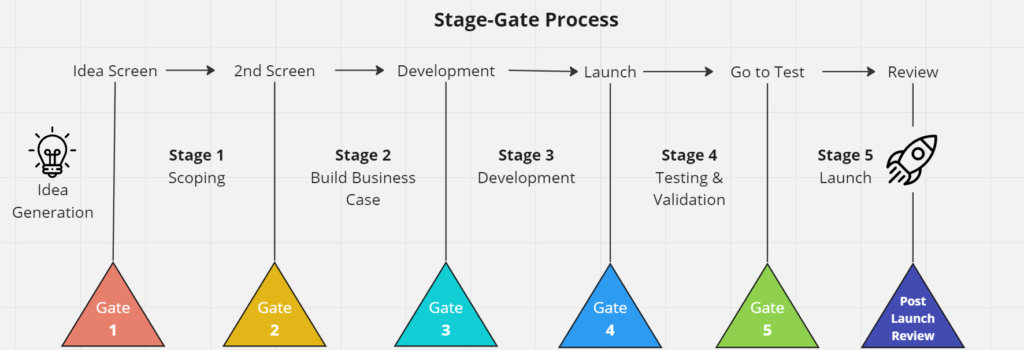After six months of meetings, the company consolidated the three methodologies into a single methodology, focusing more upon guidelines than on policies and procedures. The entire organization appeared to support the new singular methodology.

Don’t feel like reading? Listen to the answers instead:
BACKGROUND
In July of 1999, senior management at Ferris recognized that its future growth could very well be determined by how quickly and how well it implemented project management. For the past several years, line managers had been functioning as project managers while still managing their line groups. The projects came out with the short end of the stick, most often late and over budget, because managers focused on line activities rather than project work. Everyone recognized that project management needed to be an established career path position and that some structured process had to be implemented for project management. A consultant was brought into Ferris to provide initial project management training for 50 out of the 300 employees targeted for eventual project management training. Several of the employees thus trained were then placed on a committee with senior management to design a project management stage-gate model for Ferris.

After two months of meetings, the committee identified the need for three different stage-gate models: one for information systems, one for new products/ services provided, and one for bringing on board new corporate clients. There were several similarities among the three models. However, personal interests dictated the need for three methodologies, all based upon rigid policies and procedures. After a year of using three models, the company recognized it had a problem deciding how to assign the right project manager to the right project. Project managers had to be familiar with all three methodologies. The alternative, considered impractical, was to assign only those project managers familiar with that specific methodology. After six months of meetings, the company consolidated the three methodologies into a single methodology, focusing more upon guidelines than on policies and procedures. The entire organization appeared to support the new singular methodology. A consultant was brought in to conduct the first three days of a four-day training program for employees not yet trained in project management. The fourth day was taught by internal personnel with a focus on how to use the new methodology. The success to failure ratio on projects increased dramatically.
Why was it so difficult to develop a singular methodology from the start?
The difficulty Ferris faced in developing a singular methodology for project management from the outset stemmed from a confluence of challenges. Initially, line managers juggled their traditional duties with project management roles. This dual responsibility might not have equipped them with the specialized focus required for effective project management. Additionally, internal politics and personal preferences played a significant role, as indicated by the push for three distinct methodologies. This suggests that various departments or factions within Ferris believed their needs were distinct enough to warrant individualized approaches. A lack of a unified vision from the company’s leadership further compounded the problem. Without clear direction, teams might have gravitated towards processes that catered to their immediate needs, operating in silos. The first methodologies introduced leaned heavily on rigid policies and procedures. While this rigidity may have been an attempt at ensuring consistency, it also posed challenges in terms of flexibility and adaptability. Considering that Ferris was in the early stages of its project management journey, it’s understandable that they encountered a steep learning curve. The initial stages of introducing structured project management would have necessitated significant changes in work culture and practices, which employees might have resisted. Additionally, even though Ferris engaged a consultant for training, the absence of continuous external expertise during the methodology development could have led to missed opportunities for incorporating best practices. In essence, a mix of organizational dynamics, inexperience, and inherent challenges associated with change made it difficult for Ferris to immediately arrive at a singular, unified project management methodology.
Why were all three initial methodologies based on policies and procedures?
The decision to base all three initial methodologies on rigid policies and procedures likely stemmed from a desire to establish control, consistency, and standardization across the various projects. Given that Ferris was transitioning from a less structured approach where line managers juggled project management alongside their primary roles, there was probably a perceived need for strict guidelines to ensure that projects were managed effectively and efficiently. Instituting policies and procedures can provide a clear framework and set of rules for employees to follow, minimizing the risk of ambiguity or deviation. It’s also possible that Ferris aimed to achieve a sense of legitimacy and professionalism in their project management endeavors by adopting formalized processes, ensuring that all stakeholders were aligned and that there was accountability at all levels. Furthermore, having such strict methodologies could have been seen as a way to mitigate risks and avoid the pitfalls and inconsistencies that might have arisen in the past.
Why do you believe the organization later was willing to accept a singular methodology?
The organization’s willingness to later embrace a singular methodology can be attributed to several factors. First, the practical challenges of maintaining three separate methodologies became evident. Project managers were burdened with the task of familiarizing themselves with all three, leading to inefficiencies and potential confusion. Assigning projects based on a manager’s specific familiarity with one methodology was deemed impractical, highlighting the operational complexities of the initial approach. Moreover, as the organization matured in its understanding of project management, there was likely a realization that a unified methodology could offer a more streamlined, consistent, and efficient approach to managing projects. The fact that the initial methods were rigid, based heavily on policies and procedures, might have made it difficult for teams to adapt to changing project needs. A singular methodology, especially one based on flexible guidelines rather than rigid procedures, would allow for adaptability and ease of application across different project types. Additionally, the feedback and experiences from the initial phase, coupled with the increased success to failure ratio on projects, would have reinforced the benefits of consolidation. Lastly, the organization-wide support for the new methodology indicates a collective understanding and acceptance of its advantages, suggesting a shared vision and commitment to optimizing project management practices.
Why was the singular methodology based on guidelines rather than policies and procedures?
The decision to base the singular methodology on guidelines rather than rigid policies and procedures likely stemmed from the lessons Ferris learned from their initial approach. Rigid policies and procedures, while providing clear directives, can often lack the flexibility needed to adapt to the diverse and dynamic challenges that projects can present. By pivoting to guidelines, Ferris could offer a more adaptable framework that allowed project managers and teams the discretion to make decisions tailored to the unique requirements and circumstances of each project. This shift towards flexibility would have been particularly beneficial in accommodating the diverse nature of their projects, from information systems to new products and onboarding corporate clients. Furthermore, guidelines promote a culture of understanding the underlying principles and goals, encouraging teams to think critically and innovate, rather than merely following a prescriptive set of rules. This approach not only empowers teams but can also lead to more innovative solutions and efficient problem-solving. Lastly, the organization’s prior struggles with three rigid methodologies might have highlighted the benefits of a more fluid and unified approach, making guidelines a more appealing and practical choice for the restructured singular methodology.
Did it make sense to have the fourth day of the training program devoted to the methodology and immediately attached to the end of the three-day program?
It absolutely made sense to have the fourth day of the training program devoted to the methodology and attached immediately to the end of the three-day program. By placing the methodology training directly after the foundational project management training, it ensured that participants could immediately apply the general principles they learned during the first three days to the specific context of Ferris’s methodology. This sequence facilitated a smoother transition from theoretical understanding to practical application. Moreover, presenting the methodology on the fourth day, when the general principles were still fresh in participants’ minds, maximized retention and reinforced the importance of Ferris’s specific approach. Additionally, having internal personnel teach the methodology emphasized its significance and allowed employees to engage with and ask questions to those who were directly involved in its creation and implementation.
This case, and questions, is take from the book “Project Management Case Studies – Sixth Edition” – 2022, by Harold Kerzner.




